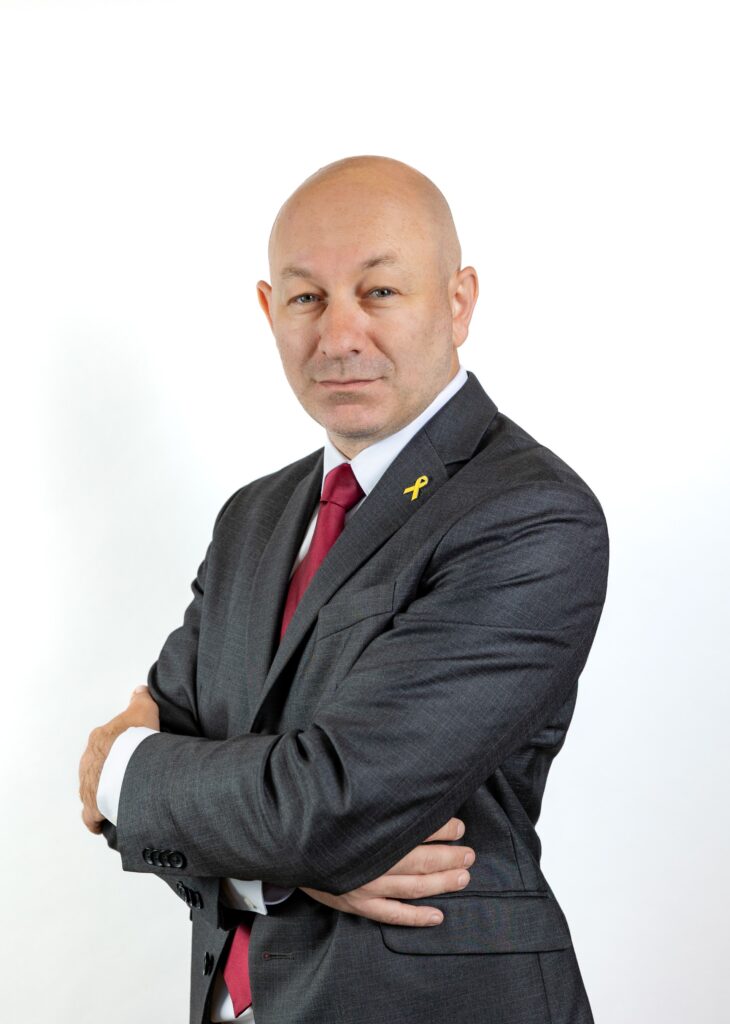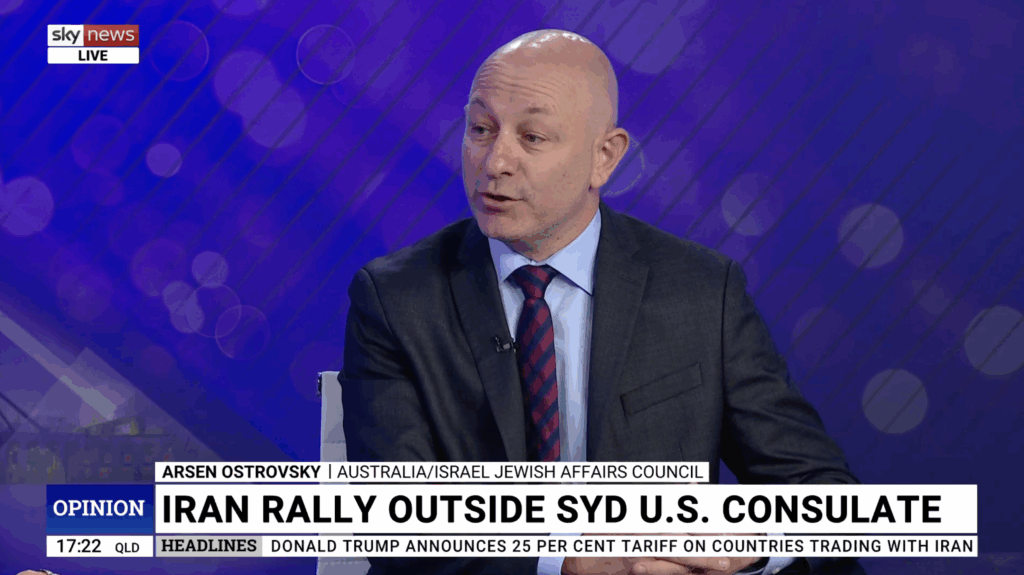UPDATES
Another ABC fact-checking fail: Gaza and Breast Cancer
August 30, 2013 | Ahron Shapiro

Why does the ABC continue to fail to adequately fact-check its stories about the Gaza Strip?
In July, I reported how the ABC uncritically parroted the easily disprovable tall tale by one of its guests that Gaza is devoid of birds, and AIJAC’s Allon Lee reported Radio National host Phillip Adams’ untruth about the population density in the Gaza Strip.
Now comes ABC reporter/producer Rania Zaydan’s contribution. Her August 20 report for Newsline, “Charities raising breast cancer awareness in Gaza”, initially included a major factual error. (Zaydan, to her credit, edited this error out of the online version of the story on September 20 on her own initiative upon her return from extended leave.) Unfortunately, the story as broadcast also suffered from a lack of some crucial context, a deficiency which remains in the revision.
Although the major error is no longer in the story, for the benefit of those who may have viewed the clip in the past, it’s important to revisit it here. In the original story, she said:
Anglican Overseas Aid says the difference between Gaza and the rest of the world when it comes to survival rates is staggering.
Gaza has one of the world’s highest rates of breast cancer and the survival rate is only 40 percent. Compare that to a place like Australia, where the survival rate is 90 percent.
But the reasons why so many women suffer breast cancer in Gaza still remains unclear.
Whilst the survival rate of Gazan women with breast cancer is indeed unacceptably low, Gaza unequivocally does not have anywhere near the world’s highest rates of breast cancer – a claim that Anglican Overseas Aid itself has verified is incorrect. In actual fact, its rate is empirically low by global standards.
(In a phone conversation with AIJAC on September 23, Zaydan explained that her sources for the claim were the Gazan cancer doctors themselves, though this had not been made clear in the story due to an editing room error, which has now been corrected.)
On the other hand, its neighbour Israel unfortunately has the fifth highest breast cancer rate in the world.
According to Anglican Overseas Aid, Zaydan paraphrased them incorrectly regarding the “staggering” difference in breast cancer survival rates between Gaza and the “rest of the world”.
This repudiation indeed makes sense, since Gaza’s breast cancer survival rates are only staggeringly different to countries in the developed world, like Australia. However, when compared to its Arab neighbours, it’s only slightly worse.
According to the World Health Organisation’s (WHO) Globocan 2008 study, the WHO’s Eastern Mediterranean region, which is comprised of a mixture of wealthy and poor Arab and Persian Gulf countries, saw an overall breast cancer mortality rate of 50.8%. True, that’s a bit better than Gaza, but not by much.
It is certainly not true that Gaza can claim to have the worst breast cancer mortality rates in the world. When compared to a variety of African countries, for example, it’s much better.
Why is it important to correct these errors? Because, otherwise, viewers would infer that a high breast cancer rate paired with a high mortality rate must therefore mean an unprecedented number of women are dying. This isn’t the case. The misrepresentation that appeared in the original Newsline story creates the illusion of an epidemic which simply, and thankfully, does not exist.
Anglican Overseas Aid’s programs targeting breast cancer in Gaza are commendable.
ABC has therefore done the organisation a disservice by showcasing their programs as part of a larger story on breast cancer in Gaza that included factual errors, exaggerations, and facts presented out of context.
So what is the vital context missing from the ABC story?
- Breast cancer is not only the most common cancer for women in Gaza, it is the most common cancer for women in virtually every country in the world.
- Breast cancer afflicts proportionally fewer Gazan women than Australian or Israeli women – far, far fewer. According to the WHO’s 2008 study, over the previous five year period, breast cancer afflicted 52.9 out of every 100,000 Palestinian women (Gaza and West Bank collectively). Over the same period, it afflicted 628 out of every 100,000 Australian women and 615.4 out of every 100,000 Israeli women! For this reason, despite enjoying a higher survivability rate, proportionally more Israeli women die of breast cancer each year than Gazan women. View a compelling comparison table here.
- Cancer rates themselves are not appreciably different between Palestinians in the West Bank and Gaza. As Al-Monitor reported in April (in an otherwise slanderous story amounting to a blood libel against the IDF) :
The Information Center at the Ministry of Health [in Ramallah] issued a statement in February 2013 according to which 12.4% of the total deaths in Palestine were caused by cancer in 2011, compared to a rate of 10.8% in 2010. Al Mezan Center for Human Rights indicated in a report issued in June 2012 that deaths resulting from cancer in the Gaza Strip amounted to 12% of all deaths.
- Again, to put things in perspective, in 2010, cancer was responsible for a far higher proportion of Australian deaths – some 30 percent.
- Moreover, Cancer rates in Gaza are also in line with other Arab countries in the region. Dr. Khalid Thabet, head of the Oncology Department at the Hamas government-run Shifa Hospital in Gaza, told Al-Monitor in the same article that “the rate of cancer in the Gaza Strip is the same in Egypt, Jordan and among Arab citizens of Israel – i.e., 60 to 70 cases per 100,000 citizens.”
- According to Dr. Sawsan Hammad, the Director of Gaza’s Women’s and Children’s Health Unit, breast cancer is rising by 4 percent per year in the Strip. While not welcome news, this is not an exceptional statistic given that breast cancer is currently rising in developing countries by as much as 7.5 percent and the global average rise is apparently only slightly below 4 percent.
But why exactly is the breast cancer mortality rate in Gaza so high? In his introduction for Zaydan’s story, news anchor Jim Middleton claimed “the main reason is lack of access to adequate treatment”. But that’s only part of the story.
In truth, according to the vast body of medical research, the main reason for the high mortality rate is not lack of access to adequate treatment, but because cancer is usually not detected in Gazan women until it has reached a late stage and begun to spread.
The reason for this – and this is alluded to in Zaydan’s piece – is that Gazan women have historically avoided clinical breast examinations and sought treatment only when their cancer becomes impossible to ignore.
A portion of Zaydan’s story actually focuses on personal accounts of Gazan women with breast cancer, especially how they deal with this stigma as well as the challenges for women seeking breast cancer treatment in Gaza, and its worth emphasising that these parts of the story are well presented.
As one recent authoritative paper on the subject, “Barriers and opportunities for early detection of breast cancer in Gaza women” put it:
The low survival rate [among breast cancer patients in Gaza] is likely attributable to several factors including: late-stage presentation, more aggressive forms of breast cancer in Arab women, younger age at diagnosis, and lack of resources for screening, diagnosis and treatment.
(Breast. 2011 Apr;20 Suppl 2:S30-4)
Moreover, Gaza’s problem is not unique. Rola Shaheen, M.D., one of the authors of the paper mentioned above, was quoted explaining the phenomenon in another paper “Developing Nations Face Challenges as Breast Cancer Rises”
“Women are also more likely to go to a doctor if there is a problem, [rather] than for screening, which is not popular in Arabic culture,” said Rola Shaheen, M.D., staff radiologist at Beth Israel Deaconess Medical Center in Boston and lead author of BHGI’s Gaza study.
Carol El-Jabari, M.P.H., executive director of the Palestinian Friends Society, a nongovernmental organization (NGO) based in Jerusalem, agreed. “If there is no problem, women do not go in for mammograms,” El-Jabari said.
(J Natl Cancer Inst. 2011 Dec 21;103(24):1812-4)
It was disappointing to note that at no point in her report does Zaydan mention who is responsible for running the Gaza health system (Hamas), let alone hold them in any way accountable for the low number of mammogram machines available to Gazans, nor does she factor in the PA-Hamas rivalry which has also taken its toll on the health care system in Gaza.
It was further disappointing to see that, even while Zaydan conceded that there has been absolutely no scientific research which links the two, she devoted a considerable portion of her report to exploring the sensational Palestinian allegation that white phosphorous used by the IDF in the January 2009 Gaza War for smokescreen and illumination purposes might be somehow related to cancer in Gaza.
Perhaps her story would been better served by an exploration of one specific environmental factor – pesticides – which is mentioned on Anglican Overseas Aid’s own website, and unlike white phosphorous, has been linked to Gazan breast cancer cases in more than one scientific study.
Notably, in “Association between chronic exposure to pesticides and recorded cases of human malignancy in Gaza Governorates (1990-1999)”, Science of The Total Environment, February 2002, Jamal M. Safi of Al-Azhar University concluded “the introduction of and heavy use and misuse of pesticides and other toxic substances in the Gaza environment is suspected to correlate with the growing incidence of cancer”.
The specific link between Gazan pesticide use and breast cancer was spelled out even more clearly in Asad Said M. Ashour’s “Environmental Risk Factors Associated with Breast Cancer-Gaza Governorates”, Al-Quds University, 2011.
Is there hope for a real improvement in Gaza’s dismal breast cancer mortality rate in the short term?
Jordan’s aggressive breast cancer awareness and screening campaign might hold the key. While Jordan’s cancer profile has historically closely resembled that of the West Bank and Gaza, according to a recent presentation delivered at Harvard, the majority of breast cancers in Jordanian women are now caught earlier. Before the campaign, 56.20% of breast cancers were discovered while at Stage III and only 23.70% at the much more treatable Stage II. Two years into the campaign, Stage III detection has dropped to 24.20%, while the cancers detected at Stage II have risen to 41.32%.
Those are the kind of results that the health care providers in Gaza – and aid agencies seeking to assist them – should be looking to emulate. It is the emphasis on early detection that experts agree make the greatest difference in lowering mortality rates.
Anglican Overseas Aid’s programs targeting breast cancer in Gaza, like Jordan’s programs in their own country, are saving an ever-increasing number of lives, and we wish them success.
The well-meaning efforts of Anglican Overseas Aid and Zaydan to tackle this problem, and work together with AIJAC to address the major factual error in the Newsline story, are very much appreciated even if the story could have benefitted by some additional context.
Ahron Shapiro
Note: This blog post has been twice revised from the original following separate discussions with Anglican Overseas Aid and Rania Zaydan. Anglican Overseas Aid has also stressed to AIJAC that they were not the source of any inaccurate information presented in the Newsline story.
AIJAC’s attempts to contact Rania Zaydan by phone and email before the publication of the blog post were unanswered. It was later established that Zaydan was not checking her work email messages while on leave overseas.
Tags: Israel





